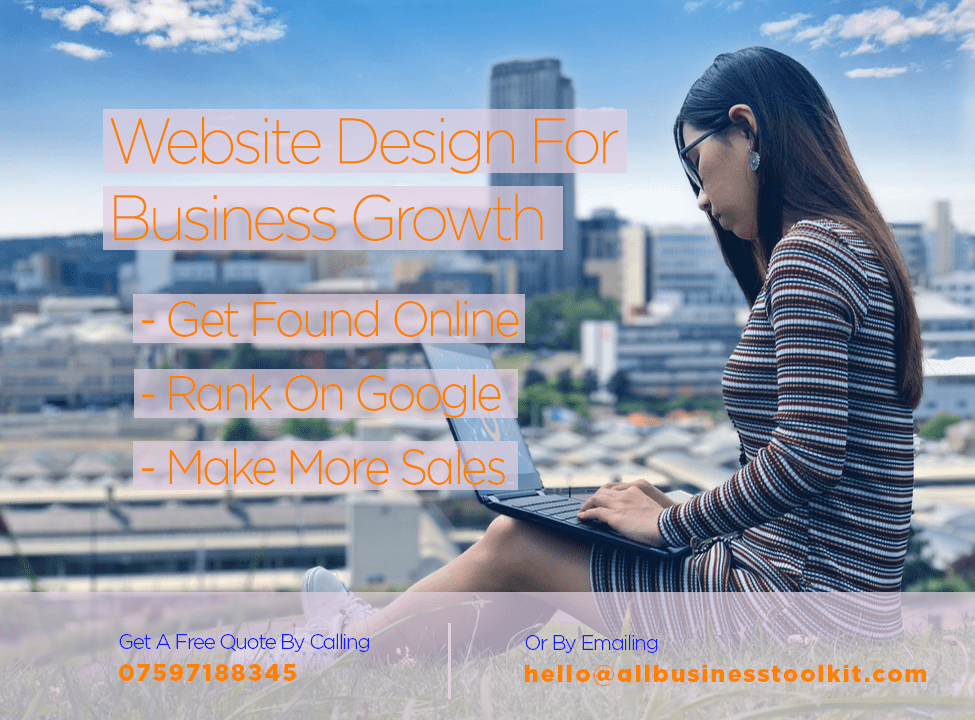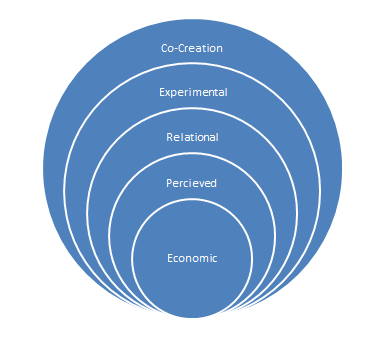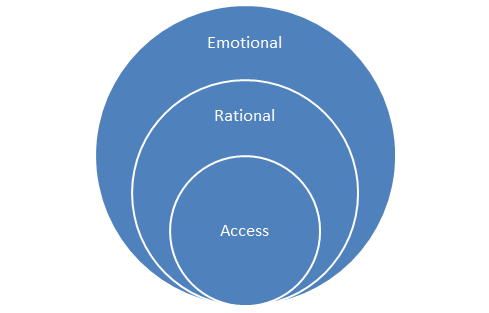In today’s more competitive world, customers require more than just a persuasive message for that impulsive purchase. You need to deliver value!
What is value in marketing? Value is the benefits your product or service offers to your customer. It is the perceived usefulness in the eyes of your target customer.
In this article, I will discuss that marketing should always aim for value, because it backs up your products message. It will provide stability in the long term.
1. What Is Value In Marketing?
This mainly means how well your product satisfies the wants and needs compared against the competitors and the price the consumer is willing to pay. For example, if a product has many features that perform better than the competition then it has value. However, if the product is expensive it may lose its sense of value. As the costs outweighs the value delivered.
2. Why Is Value Important?
Value is important as it is the mechanism we use to measure why our customers buy our products. More simply, value is the reason people make the purchase in the first place. Without value, you will have no customers. Without customer your will have no business.
In a competitive industry, the value has to be more than the competition. If you charge a higher price, then the function or quality has to perform better than competing products.
3. The SIX Forms Of Value
There are SIX forms of product value. A Marketer should be mindful of each of these when trying to incorporate value into the product development process.
The SIX forms of value include:
- Brand promise
- Style
- Features
- Convenience
- Service
- Location
This is because the six forms of value have to meet the expectations of the customer.
4. Brand Promise
Brand Promise is the ability to tell customers what you offer them, and then deliver that offering that was promised. Brand promise is customers agreeing that you have delivered to their expectations. Whereby, they would be reassured and trust to use your products again. If a business successfully holds a brand promise in the eyes of the consumer then they would be no reason for them to choose other brands over yours in the future.
However, this is by far the hardest to achieve, especially in broader markets as people have different expectations from you and the brand promise can be somewhat subjective. In addition, brands such as Volkswagen have achieved this very well. This is because generally all their cars are high quality and extremely reliable. Just by purchasing a Volkswagen, you are reassured that it will last you a long time.
The brand promise Volkswagen has built over the years, is in both their messaging, but the product its sells. Whether it is being trendy, reliability and performance Volkswagen are innovating news ways to achieve these factors in their research and development budget. Owning Porsche, Lamborghini and Audi has made Volkswagen the most successful car manufacturer in the world, selling the most expensive high performing cars that people are willing to pay for.
5. Style
We can describe style as the way you look and the way you act. It is a personal preference that changes over time. People associate themselves with a particular image that holds true to them, by which they want other to see them as part of the stylish group.
Style is another form of value that holds true in Volkswagen. As discussed above, they own many brands all over the industry, each positioned differently in the market. Audi position their selves towards high-class hatchbacks, whilst range rovers are focused towards land rovers.
Volkswagen also has sub products within each brand that they tailor more towards individual preferences. For example, the Volkswagen beetle is aimed at young women with the trendy bubble style. Whilst the Volkswagen Golf is a smaller and lower to the ground, being aimed more towards young men. This takes into effect of colours and shape.
6. Features
Features include how the product or service performs. The features are the functioning attributes of your product. Features basically are Benefits what your product does for the customer. The benefits are the ways that the features make your customer’s life easier by increasing pleasure or decreasing pain.
The benefits of your product are the core of your value proposition. The best way to list out the benefits of your product is to imagine all the ways that your product makes your customer’s life better. For example, the Volkswagen Gold has a bigger engine, its noisier and is a lot faster than the Volkswagen Beetle.
However, the Beetle has more space and legroom for a more comfortable ride. These traits are generalised, but seem important for Volkswagen’s target group. Other examples can include the family car. It has many features for the family, such as TV on the back seat and a big boot area to store the family suitcases. Whilst Seat is stripped from fancy interior such as touch screen CD players. These are positioned towards cheaper cost effective audience.
7. Convenience
Convenience is a massive problem with electric cars and is the only reason they have not taken off so well yet because of their limited mileage.
However, Tesla is killing it as they have developed the electric car battery technology better than anyone else has. Their technology can take a car 600 miles in one charge. This term can also be known as the following: form utility and place utility, time utility, possession utility. These are all forms of convenience value, which people will pay extra for.
8. Service
A service is offering something none tangible that people are willing to pay for. Service can be anything from customer care to product line support. It provides a guarantee and some reassurance that once purchase is made you are covered from any problems that may emerge. This can also be on-going maintenance or instant help whenever you need it.
9. The Co-Creation Value Onion
The SIX forms of value can be better described in the co creation value onion model.
Co Creation Value Onion Model
Economic
This refers to the market size, physio graphic, behavioural & profile segmentation demographics that corrispond to that particular market.
Perceived
These are perceived value, which can be illustrated by, efficiency, excellence, status, esteem, play, aesthetics, ethics and spirituality (Kelly et al, 2017, p 10).
Relational
This represents the connection between the customer and this business. This can include customer loyalty, interaction and long-term engagement
Experimental Potential
Experiential marketing is a growing trend, which involves marketing a product or a service through experiences that engage the customers and create emotional attachment to the product/service.
Co-create
Co-creation is the joint creation of value by the company and the customer. This allows the customer to aid the construction of the desired experience your business delivers. This way what your business delivers is more useful as they aided in the design. In my work, I define co-creation as the “purposeful action of partnering with strategic customers, partners or employees to idea, problem solve, improve performance, or create a new product, service or business.”
Value co creation is the combination between “customer participation” in product development and “value appropriation” for company. Customer-driven strategies are favourable for any kind of organisation in every industry as customers brings demands for supply of organisations. To create the effective and sustainable Marketing plan, managers need to quickly adapt with market trends, especially the consumer behaviour’s trend on regular basis to adjust Marketing plan timely for adaption and competition.
10. Value In Experience
The product experience is the way that owning your product makes the customer feel. It is the sum total of the combined features and benefits. Product experience is different to features and benefits because it is more about the emotional reasons why people buy your product. We can break down the intended value customer want to experience by outlining the wants and needs.
11. Wants
Wants are the emotional drivers of decision-making are things that we want to be, do or have. Our wants are usually conscious (but inspirational) thoughts about how we would like to improve our lives. They sometimes seem like daydreams but they can be powerful motivators of action. The wants speak more to the pull of our hearts and our emotions. I may need a car to get from A to B, but I want a BMW.
12. Needs
The customer’s needs are the rational things that the customer needs to get things done. Interestingly, needs are not always conscious. Customers can have needs that they may not know about yet. Designers call these “latent needs“. The best example is that none of us knew that we needed a portable music player until we saw an iPod for the first time (we also then suddenly wanted an iPod rather than any other perfectly good music player). The needs speak more to the pull of our heads and rational motivations.
13. Value Considerations
Now, we have a sense of how our customer engages with our business. We now need to learn what value to deliver at each stage of the customer journey. In this stage, we are starting to produce some context for our customer journey map.
However, In order for our customer journey map to be effective, we need to understand what our customer value from us at each stage.
Value Onion Model (Richard Wilde, 2017)
At each stage of the customer journey, we can break down the form of value using the above model. The onion model breaks down the physical and psychological behaviours, eliminating any barriers to purchase better than the competition.
- Access – Whichever stage of the customer journey, you need to ensure your audience are able to access your products easier than the competition.
- Rational Factors – Choosing the item based on factual and sensible importance.
- Rational factors are tangible factors such as efficiency, excellence, and aesthetics (Copulsky, 1990). Decisions are mostly made on a conscious level.
- Emotional Factors – Emotional factors are based on how using the product makes you feel.
- Value – Your product delivers a collection of the above attributes and features appeal to your audience, and target niche more specific than your competitors do.
Conclusion
Therefore, value is not only in the benefits of a product but also a feeling that is embedded in the brand.





![Product Positioning [Complete Guide] Tools For Growth Product Positioning [Complete Guide] Tools For Growth](https://allbusinesstoolkit.com/wp-content/uploads/2018/12/Product-Marketing.jpg)

